Across Time’s Threshold: 35+ Remarkable Artifacts That Have Endured Ages
Multiple civilizations and empires have risen and declined throughout time, but not without leaving behind traces of their existence. Massive structures such as statues and delicate and exquisite crafts such as jewelry provide a window to the past, giving us insights into how our ancestors lived. Celebrated in poetry and written about by historians, these magnificent creations are witnesses to human imagination and aptitude, leaving an indelible mark on past and current periods, and will undoubtedly fascinate and inspire future generations. This fantastic list highlights some of the most enthralling and incredible edifices ever constructed. Feast your eyes on Roman, Greek, and Egyptian architecture and several lesser-known cultures that are no less extraordinary, and be captivated by these magnificent artifacts.
Ancient Egypt
The Ancient Egyptians are one of the most famous and significant civilizations ever. Among their many surprising inventions are the calendar, timekeeping, wigs, makeup, and a primitive form of bowling. One of the finest structures to have come from Egyptians is the pyramids of Giza, which still inspire wonder to this day.
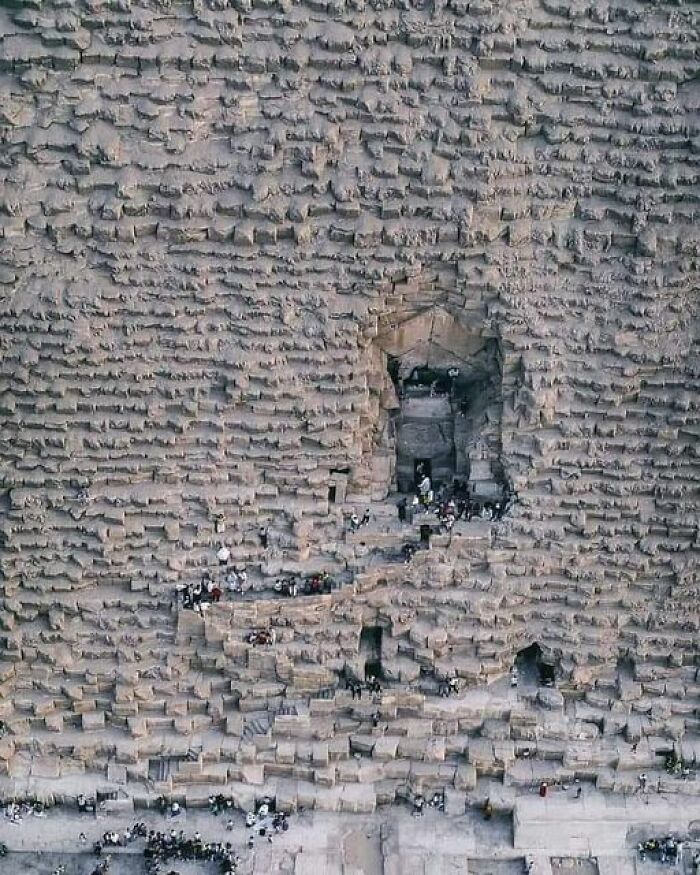
Archeologists and historians continue to be baffled about how people who existed so long ago could have the technology and skill to create such huge and accurately built monuments. Most believe slaves carved stones from quarries with primitive tools and lifted them into position.
Romania, The Trovant stones
These mysterious and extraordinary stones are found in the wilderness of Romania, near the village of Contesti, and appear to move, grow and even breed. Such is the interest in these strange geological formations that much folklore has sprung around them.
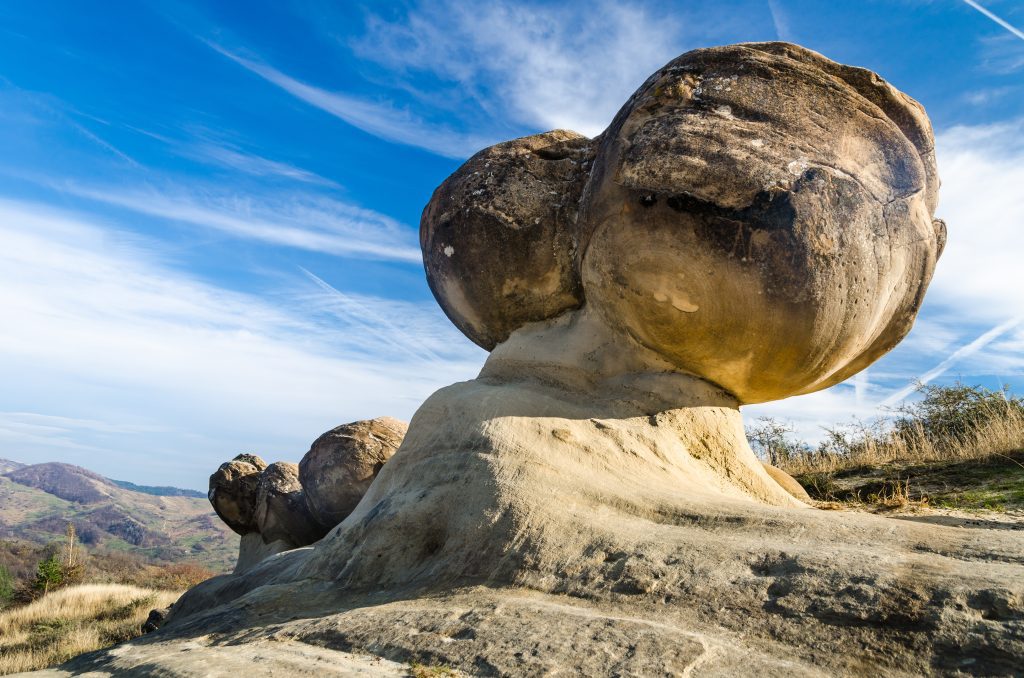
They range in size from gigantic to tiny and are fascinating examples of nature working in mysterious ways. Experts discovered that the formations are caused by sandlike minerals embedded into existing rocks that expand and change when exposed to moisture.
Wooden throne in the English woods
England is a country rich in history and folklore, and it’s no surprise that artistic creations such as this are a common sight in the forests and woods of this ancient land. The skill in producing this wooden throne in Kendal is extraordinary and has become quite an attraction.
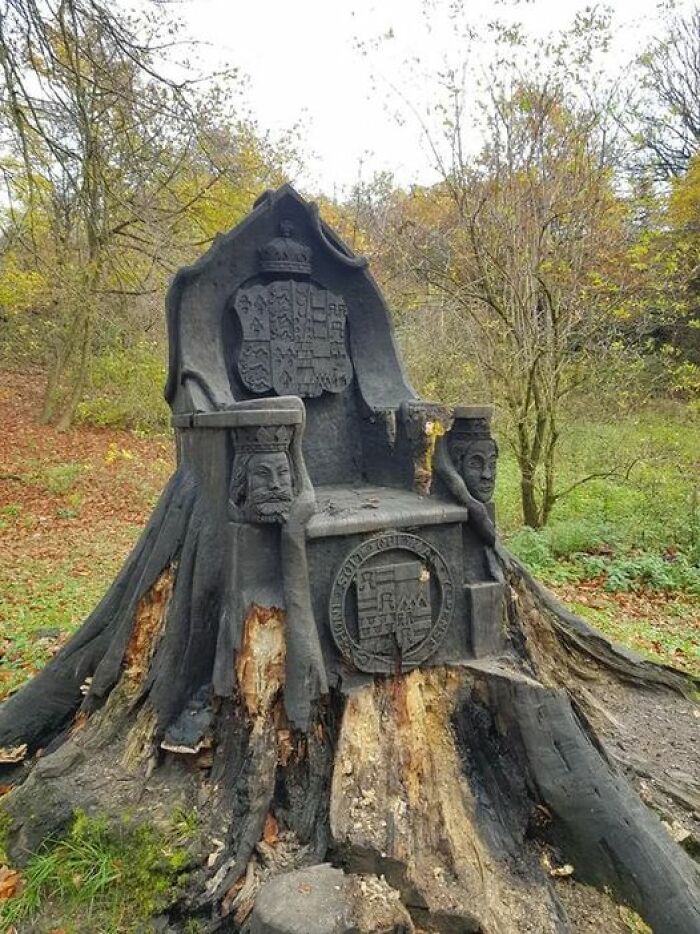
This is relatively modern compared to the other structures on this list, but it’s fascinating, nonetheless. The wooden throne was sculpted by Andy Levy in 2012 using a chainsaw and a chisel. The elaborate details include the coat of arms of Sir William Parr, who resided in Kendal castle during the 16th century.
Greek Ram helmet, found in Italy
This magnificent example of a Greek helmet was built sometime between 500-550 BC, and, incredibly, it was crafted from a single sheet of bronze. The Greeks were an advanced civilization, and objects such as this illustrate that point.
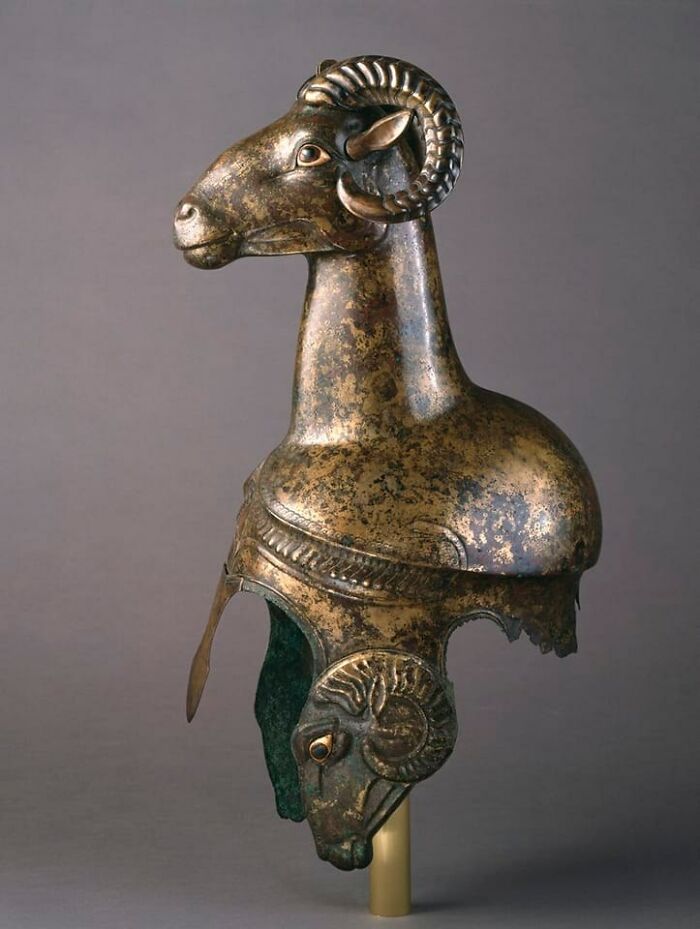
The ancient Greeks were a vibrant culture, and artifacts such as this highlight the skill and artistic expertise they employed to construct various equipment. Its size indicates that it wasn’t worn in battle. It was created only for ceremonial purposes.
Chalice of Emperor Romanos 2nd
The Emperor Romanos the Second was a powerful Byzantine ruler who ruthlessly seized control of the empire. Although he only ruled for four years, between 959 and 963 AD, this magnificently ornate chalice is a testament to his power.

Objects like this give us a glimpse through the window of time and allow us to imagine the status and power this short-lived emperor must have wielded. Ancient history, indeed, is fascinating. Those who fancy seeing this up close can visit the San Marco Treasury in Venice.
Vijaya Stambha, Victory monument in Rajasthan (India)
This impressive tower is a victory monument constructed by the Hindu king Rana Kumbha in 1448 to celebrate his victory over the Malwa army. It is dedicated to the Hindu god Vishnu, has nine stories, and stands over 37 meters tall.
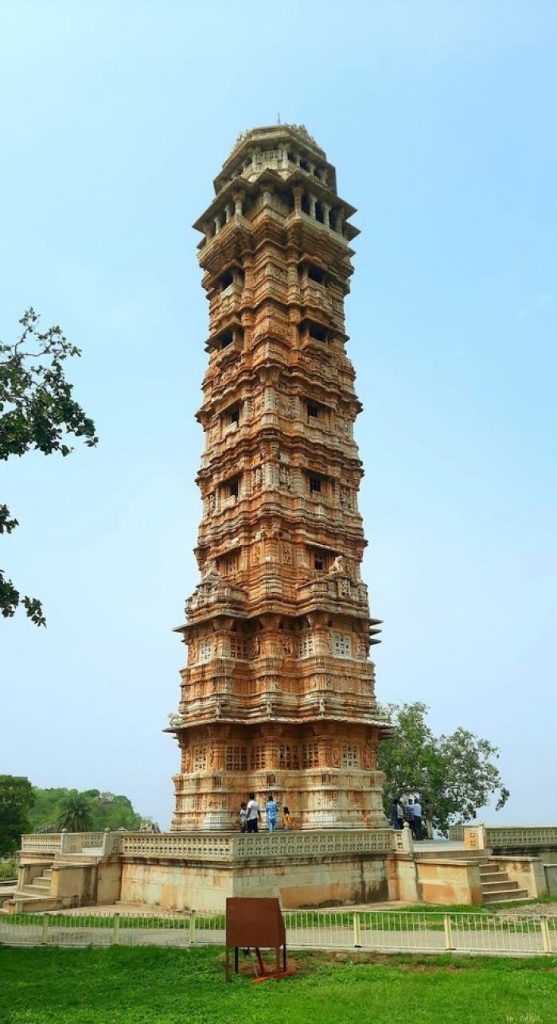
The tower was constructed from red sandstone and white marble, was completed in 1458, and is covered in inscriptions and tributes to various Hindu gods. There are also depictions of episodes from the Ramayana and the Mahabharata, two of the foundational texts of the Hindu religion.
The Great Ziggurat of Ur
This great temple in Iraq was built over four thousand years ago during the early Bronze Age and is remarkable for its impressive size and historical importance. By the 6th century BC, the temple had crumbled and was little more than a ruin.
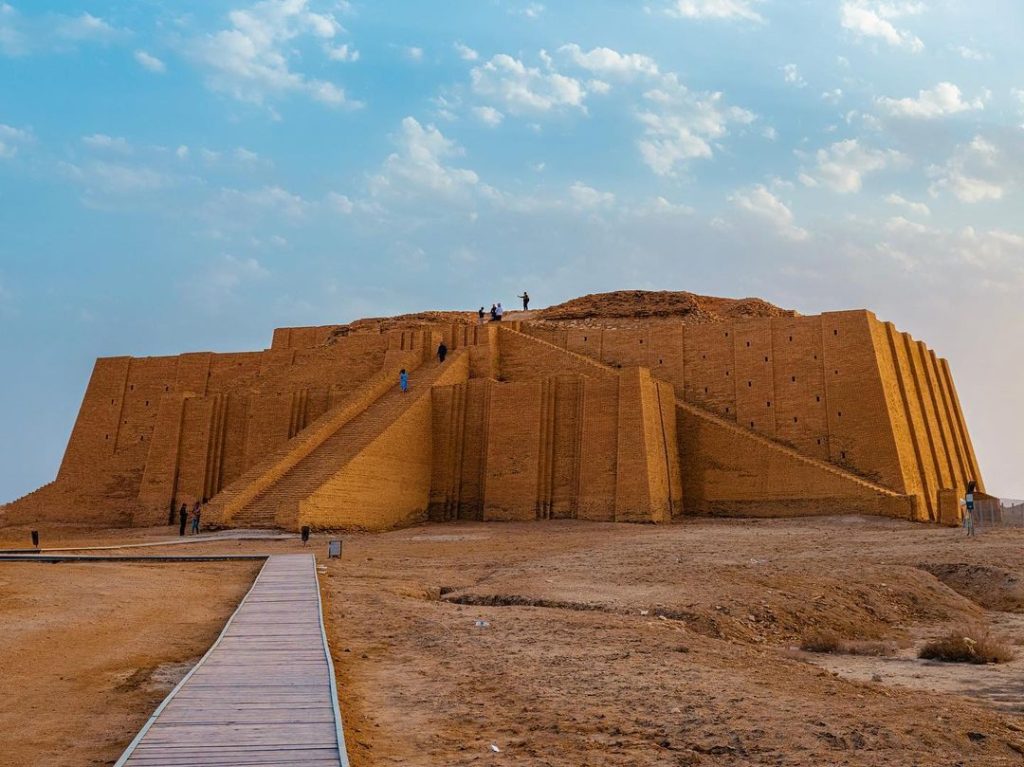
The temple was restored twice, by King Nabonidas during the Neo-Babylonian period and by Saddam Hussein in the 1980s. Getting there in Thiqar can be tricky, but it is a journey worth taking if you love history and architecture.
Helmet from Sweden 6th-9th centuries AD
This helmet is thought to predate the age traditionally associated with the Viking period, but its shape and design are reminiscent of the type worn by the Vikings. The Norse seafarers left an indelible mark as they traveled to various parts worldwide.
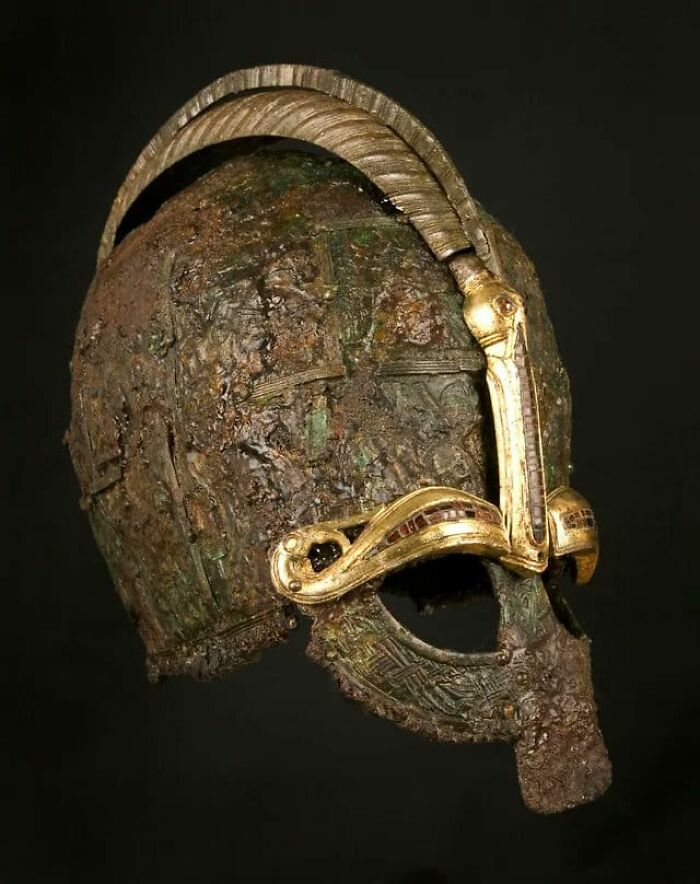
They were known for their ferocity and fearlessness. Contrary to commonly accepted notions, Viking helmets did not have horns. This artifact gives us a good insight into how civilizations influence each other and stand on the shoulders of what has come before.
Gold pendant featuring Aphrodite, Alexandria 2nd Century AD
Look at the stunning piece of ancient Egyptian jewelry featuring Eros and Aphrodite. It is embellished with garnet and green glass paste. This makes you think about how ancient artisans produced different works of art, including this lovely pendant.
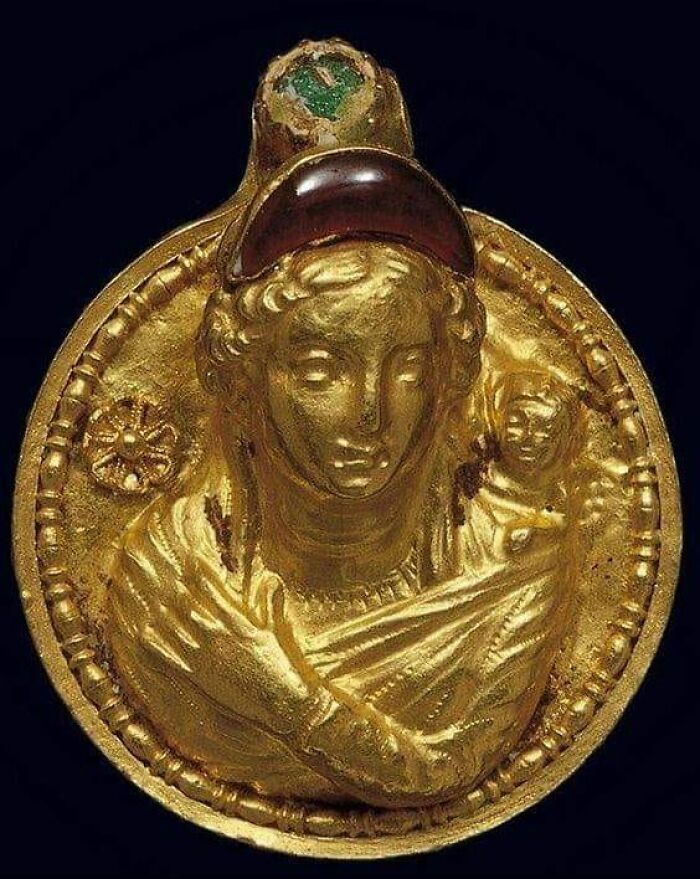
Incredibly, ancient people could produce such beautiful and ornate pieces of jewelry. A mind-blowing example of ancient culture! People would have worn this as a tribute to Aphrodite. Ancient people believed strongly in a pantheon of gods who they thought had control over their lives.
Tree growing out of a doorway, China
This extraordinary image shows a tree growing from the top of a doorway in Jieyang, China. Traditionally the symbolism associated with a tree growing from a doorway is that of strength, resilience, and transformative growth.

Sights such as this showcase the rich and varied world we live in. Although not a man-made creation like the entries on the list, it’s still marvelous and gives us a profound sense of wonder at the world around us.
World’s oldest wooden staircase, Austria
This image leaves us stunned. This is the world’s oldest wooden staircase, found in an old salt mine in Salzwelten Hallstatt, Austria. It is over 3,400 years old and still stands today, but nobody goes up and down it anymore due to safety concerns.
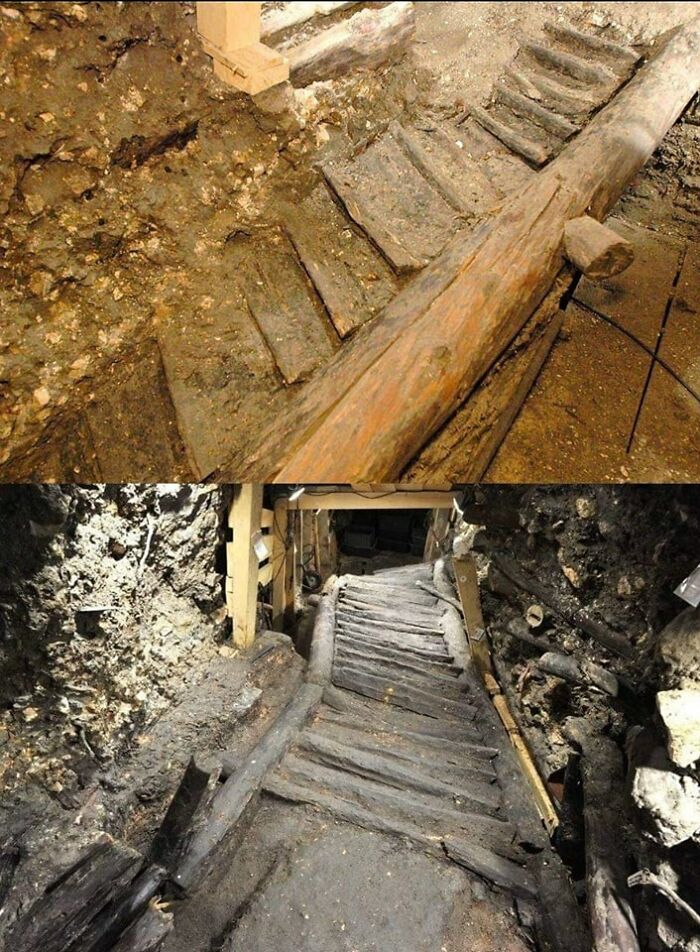
Although it may look a little uneven and rickety, it was constructed to stand the test of time and is a fantastic feat of engineering and craftsmanship. This is a stunning example of history surviving to the modern age.
The Temple of the Moon, Machu Picchu
Machu Picchu is one of the world’s most celebrated ancient sites. The city is home to some of the most incredible architecture, and its best-kept secret is this ceremonial temple constructed 1,500 years ago and rediscovered in 1936.
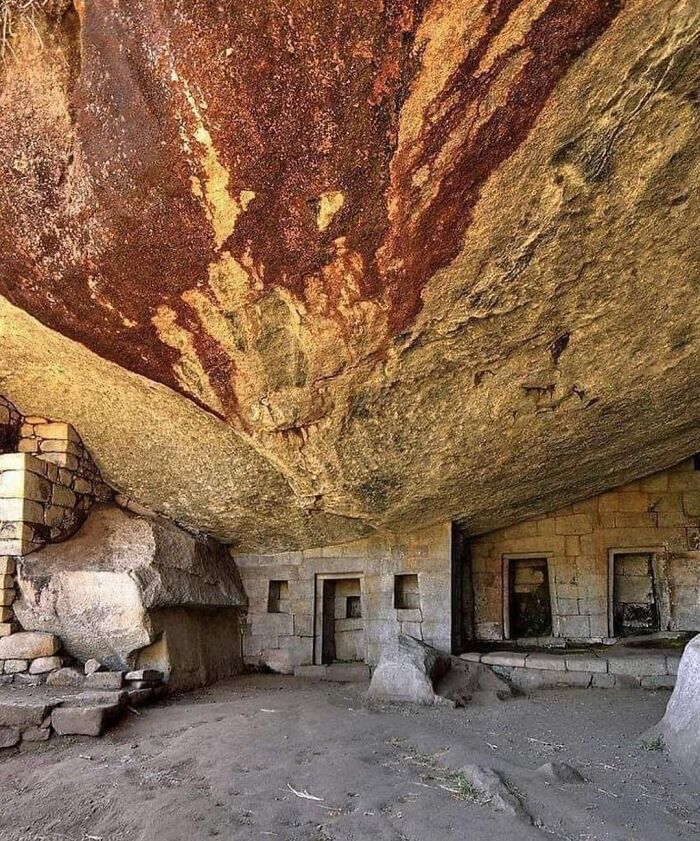
Visitors must descend over 1,000 steps to reach this beautifully carved shrine, but the journey is worthwhile. In the center is a throne carved from rock, and beside it are steps that descend deeper into the cave. Explorer Hiram Bingham gave this place its name.
Machu Picchu
Located in Peru’s Andes Mountains, Machu Picchu is known as the ‘abode of the gods,’ this monumental city comprises hundreds of buildings, shrines, and statues. The 15th-century citadel is the most recognizable icon of the Incan Empire.
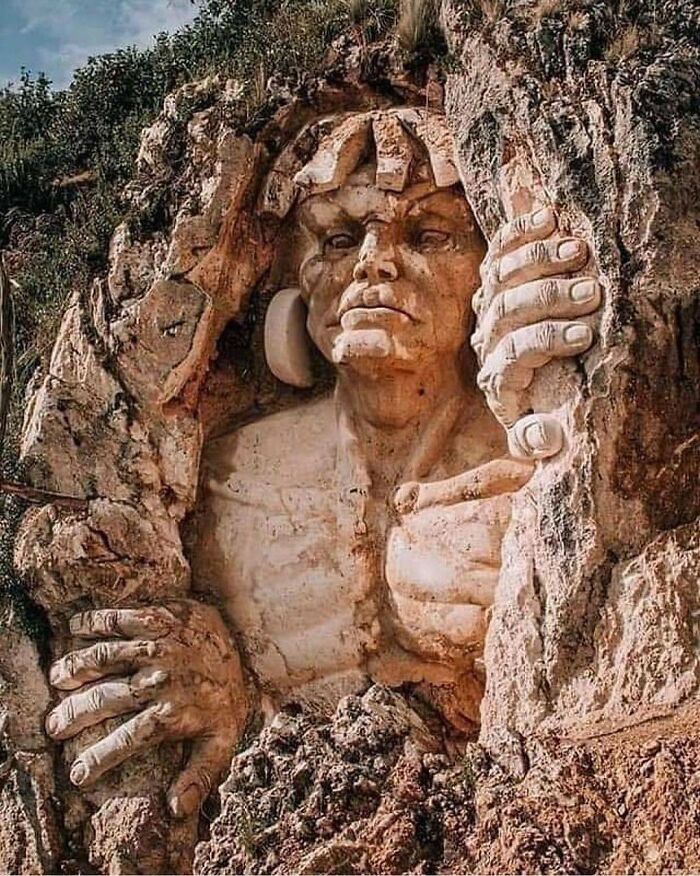
It has puzzled and inspired those fortunate enough to visit for hundreds of years. The trek up the mountain is arduous and not for the faint-hearted. However, once you get there, you are greeted by breathtaking views and a portal to an ancient world.
Mada’in, Saudi Arabia
This ancient city is called Mada’in and is found in Saudi Arabia, and an important historical site in the Islamic religion. It dates from the 1st century AD and was granted World Heritage status in 2008. It is believed to be the Nabatean’s second-largest city after Petra.
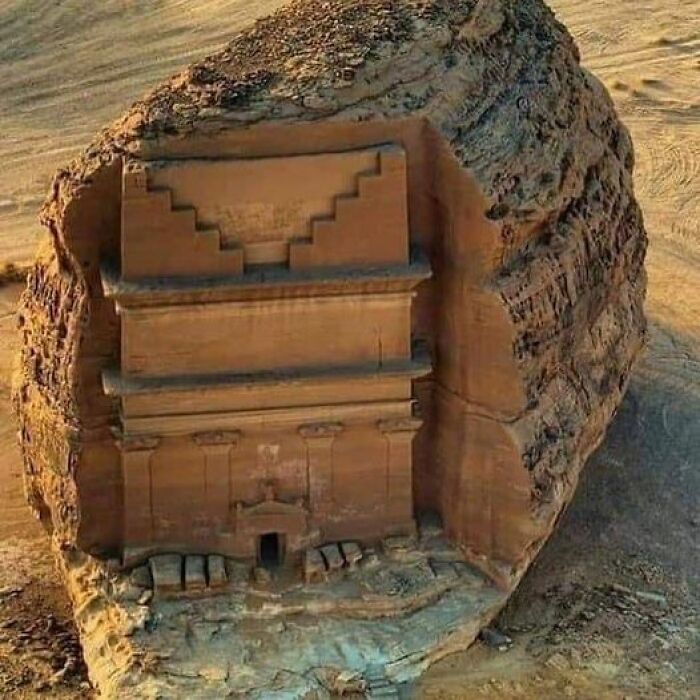
The ancient Romans incorporated the city into the Arabian province, and the city’s rule changed hands multiple times during the following two thousand years. The town was located upon ancient trade routes, which added to its importance. Its extraordinary preservation can be attributed to the dry climate and the local beliefs.
The Great Wall of China
The world-famous Great Wall of China was erected as a defensive structure in northern China and is over 13 miles long. It is a symbol of the Chinese civilization’s steadfast strength. However, the prevailing statement that it can be viewed from the moon is, in fact, untrue.

But this does not take away from the impressive construction and size. It was built with different materials and took over 2 millenniums to complete. Millions of tourists travel to see it and walk its length—a truly astonishing feat of engineering.
Human Handprints, Wyoming
Found in Wyoming’s White Mountain, these ancient imprints of hands were made by rubbing the slightly soft sandstone and are thought to be over one thousand years old. Placing your own hands into these ancient imprints is like touching history.
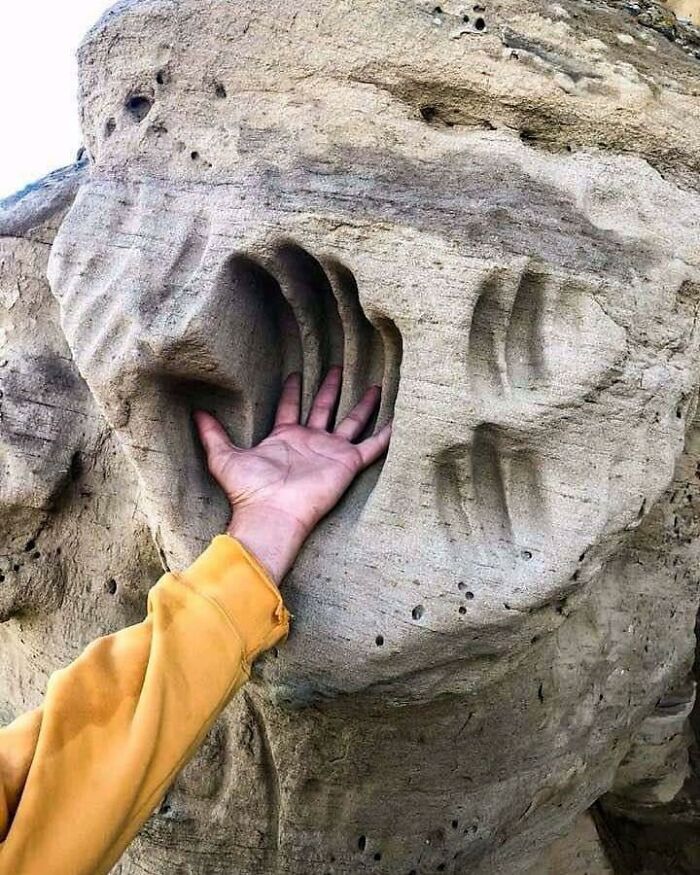
Also known as petroglyphs, these imprints are vital in understanding the beliefs and culture of the people who made them, the Ancestral Eastern Shoshone. Not as well-known and as well-researched as other sites, White Mountain only gets 12,000 visitors annually.
Capital in the shape of a bull, 518 BC
In this case, capital means the top of a column or a pillar. This massive sculpture is of a bull, and by comparing it to the man in the picture, you can get a sense of its size. It’s astonishing that this piece is still intact, considering what happened to the Persian Empire.
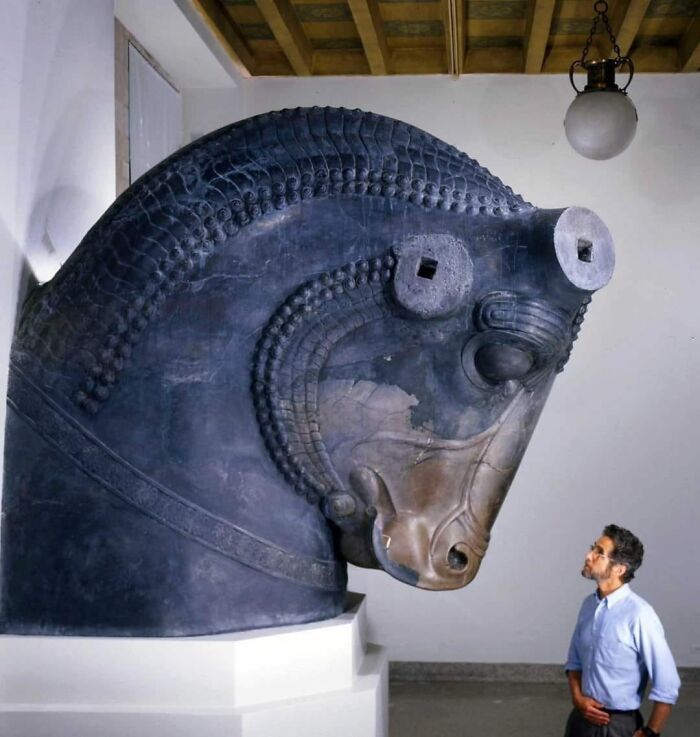
It belonged to King Darius I, also known as Darius the Great, who was noted for his various building projects and policies that helped fortify the Persian Empire. The size and impressive aspect of this capital indicates the leader’s wealth and status.
Masada Fortress in the Judaean desert
This magnificent carved fortress overlooks the Dead Sea and symbolizes the ancient kingdom of Israel. Its location was high up on a rocky hillside which would have provided it with a solid tactical defense against enemies. The vision and work put into this structure are astonishing.
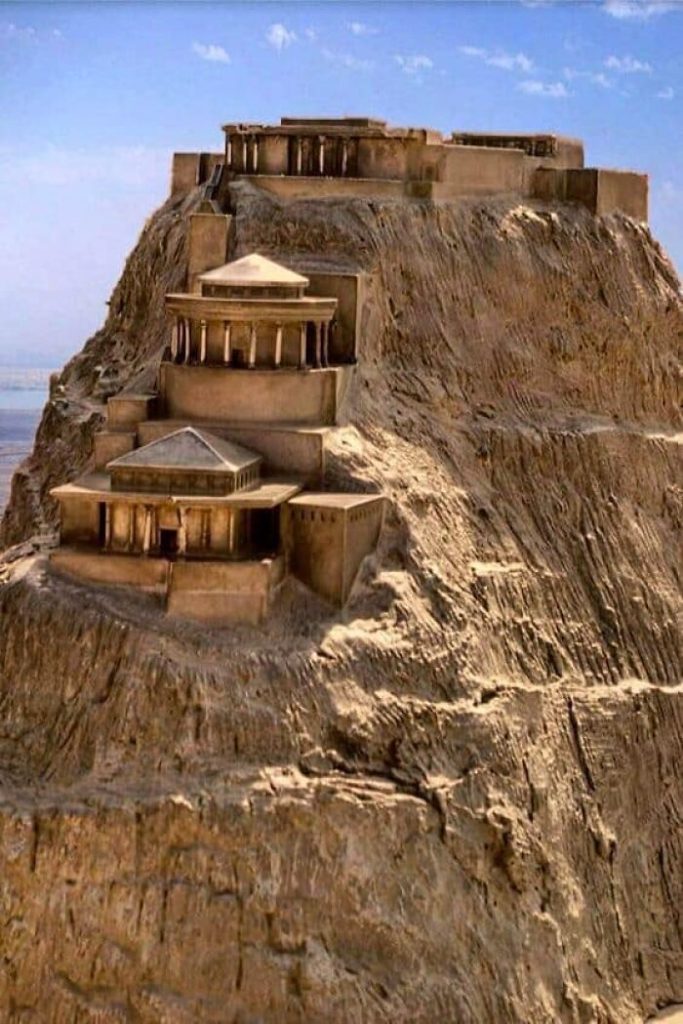
Today it is a well-known and loved tourist destination, but when it was still an active fort, it was the site of many bloody and violent battles. Nowadays, the descent can be quickly made by cable car, but the imagery is no less potent than it was back then.
Bisitun Pass, Iran
This inscription at the Bisitun Pass in Iran is a UNESCO World Heritage Site and was a hugely significant archeological find that helped scholars decipher cuneiform, one of the world’s oldest writing systems, which works similarly to the Rosetta stone.
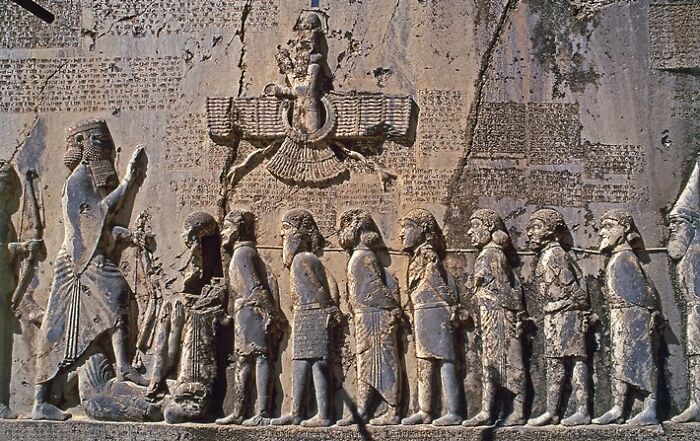
The engraving was carved shortly after King Darius ascended the throne and is repeated in three different languages, and by using the known languages, historians and scholars could work out key parts of the cuneiform and use it as a guide for further research.
4,000-year-old ceramic pipes, China
A crucial part of establishing any civilization is consistent access to clean water, and how is this achieved? The answer, of course, is in constructing a system of pipes and other plumbing features. Those you see in the picture are over 4,000 years old!
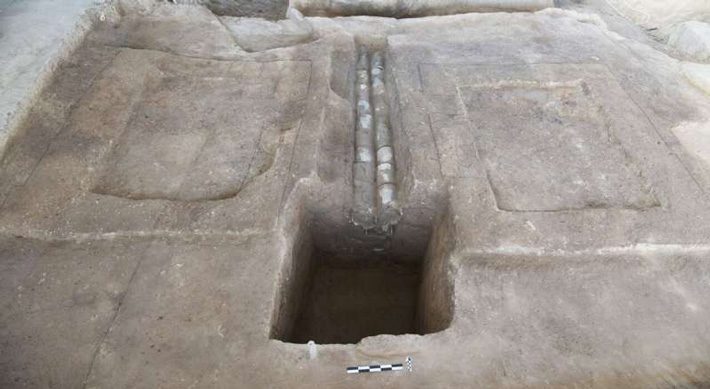
By now, they are in a state of disrepair, but back when they were in use, they were groundbreaking and essential pieces of engineering in establishing this ancient Chinese society. Romans may have been very good at plumbing, but they weren’t the first to use it.
Ionic Temple of Garni, Armenia
This has to be one of the most stunning examples of ancient buildings we have ever seen. The way it is reflected from the water at its base is beautiful and a sight to behold. This is the only remaining Greco-Roman colonnade structure in Armenia and the former USSR.
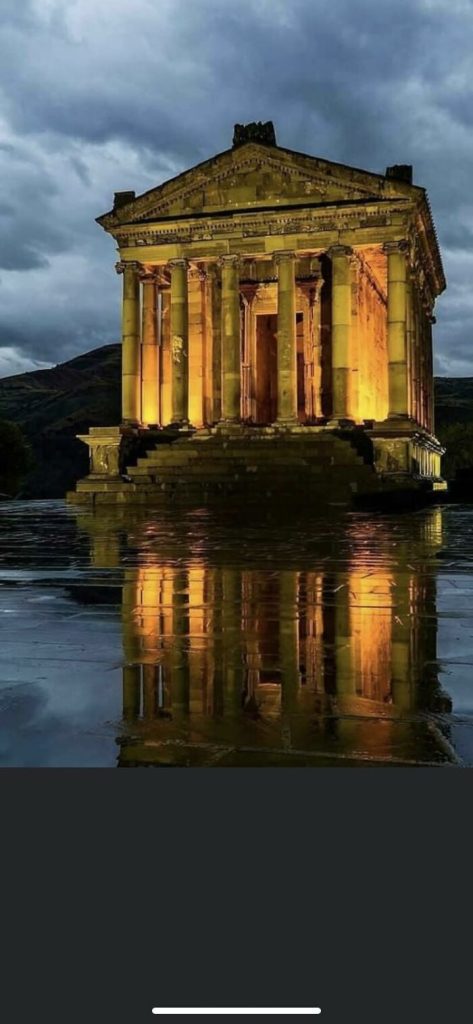
It was constructed in 100 AD and was an essential religious worship site for the ancient Armenian people. However, some scholars say it survived the destruction of pagan edifices because it is not a temple but a tomb. It collapsed in an earthquake but was reconstructed in the 1960s and ’70s.
The Chronicle of Georgia monument
Located near the Tbilisi Sea, this popular tourist attraction chronicles the history of Georgia. Created by Zurab Tsereteli, it depicts various episodes and important information about its history and people, and a large part of its inscriptions focus on religion.
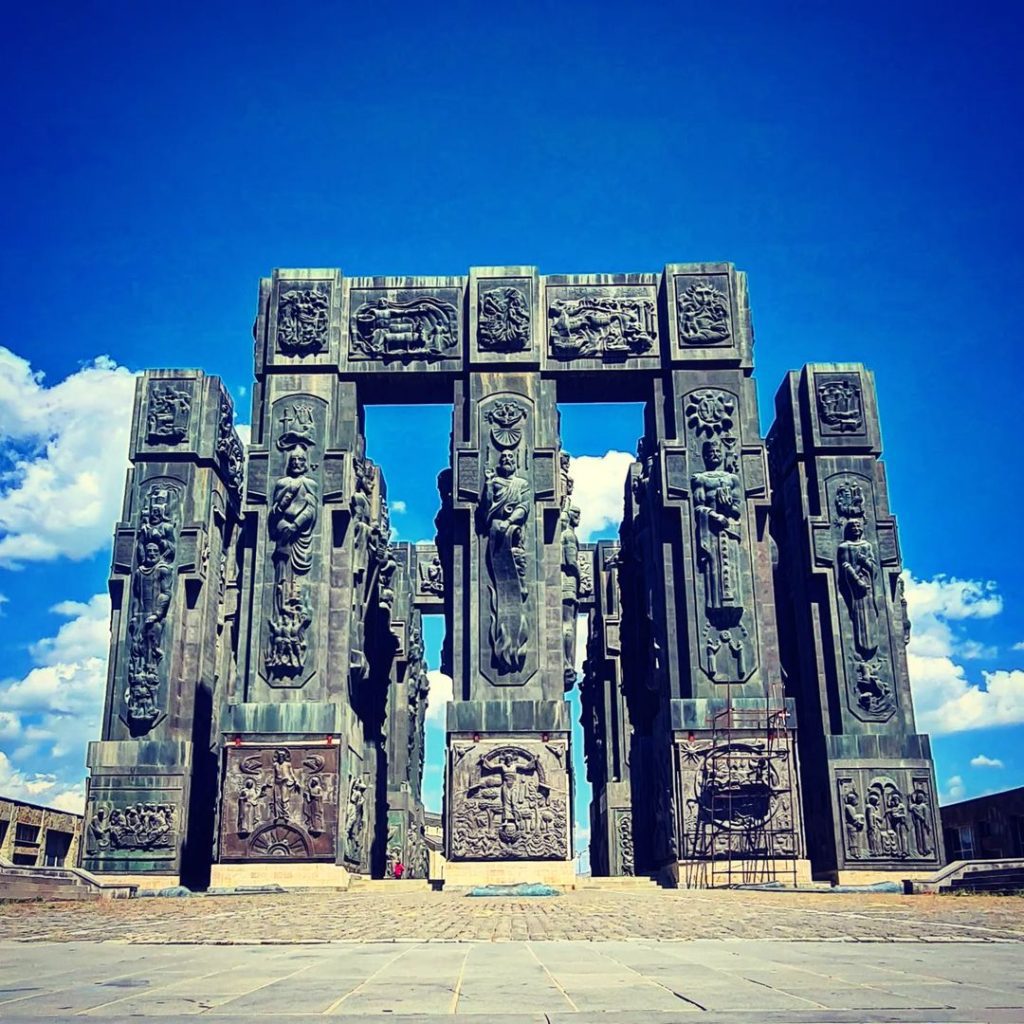
The massive copper, bronze, and stone structure is perched on a hill, providing visitors with a perfect viewing platform over the Tbilisi Sea, which is not a natural sea but an artificially created lake and the city’s primary water source.
The Old Bath, Pompeii
Many are familiar with the ancient city of Pompeii. In 79 CE, the nearby volcano, Mount Vesuvius, erupted, showering the town with volcanic debris. Clouds of blistering hot gases followed, destroying structures and asphyxiating residents, animals included.
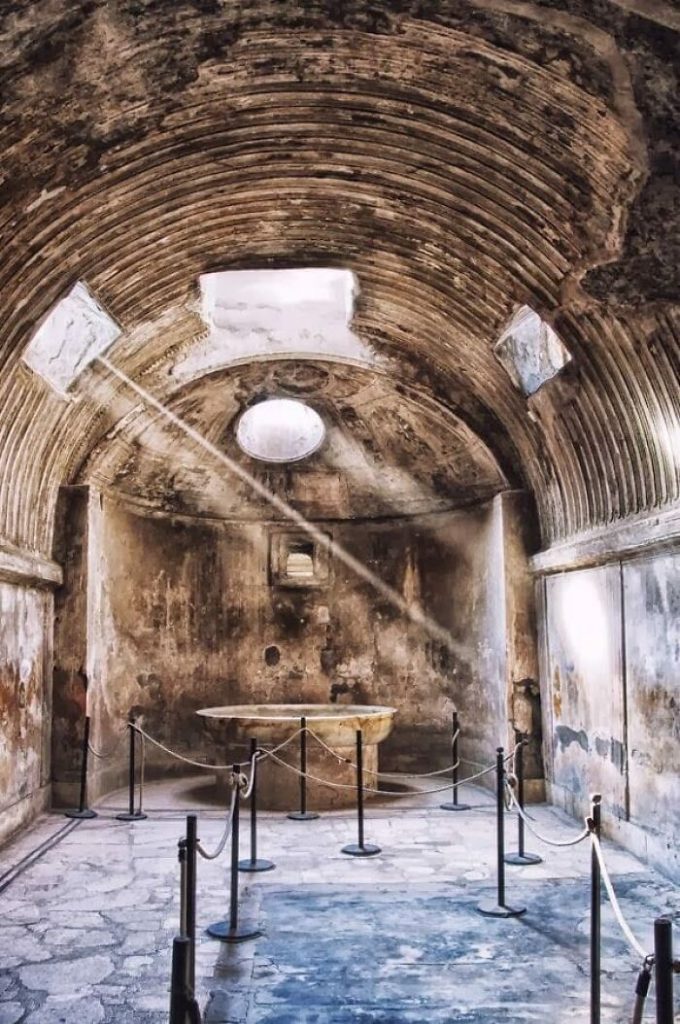
The city lay beneath the ash for hundreds of years, preserving them in excellent condition. This building is just one of the many unearthed. Nowadays, Pompeii is on a lot of people’s travel bucket lists, but don’t get confused. The ancient city is next to a modern one called Pompei.
The Hearth, Pompeii
The Romans were groundbreaking in their techniques of construction and architecture, and their influence is still seen in modern-day endeavors. The structures and buildings they erected have stood the test of time, including the Colosseum, Pantheon, and the Aqueduct of Segovia.
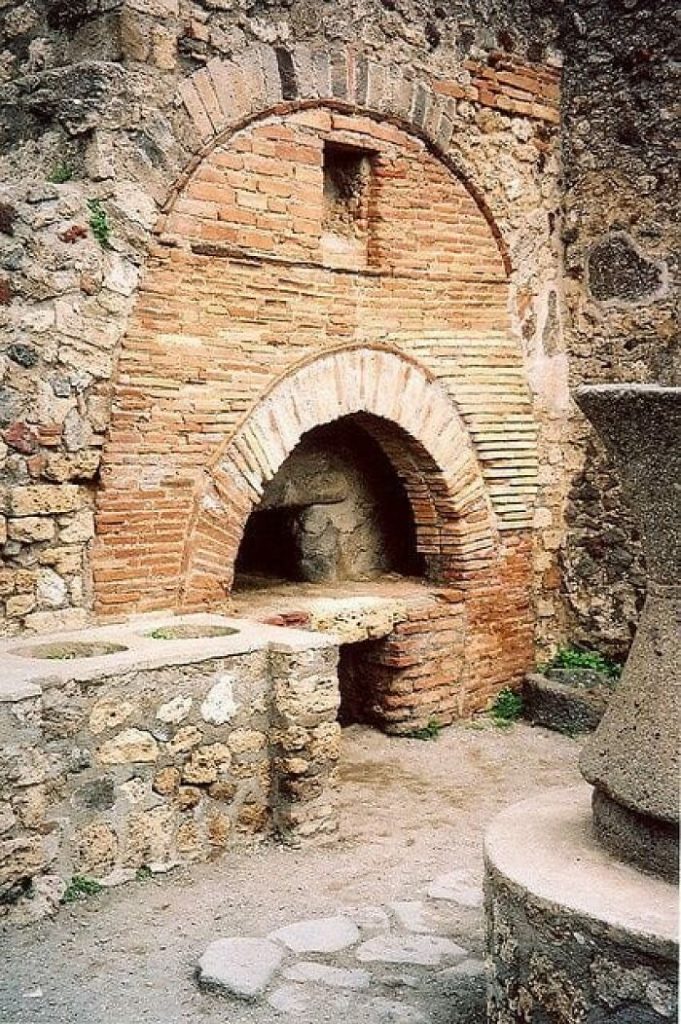
Examples such as this hearth in the ancient city of Pompeii give us a sense of what life must have been like hundreds of years ago. When the old city was unearthed, a similar hearth was discovered with loaves of bread still in it.
Egyptian Stele, Heracleion
This action shot depicts the recovery of an ancient stone from the sunken city of Heracleion. The city was lost to a flood during a significant change in the climate but has been excavated, and many ancient artifacts of interest have been recovered.

The work is detailed and delicate, and the divers are highly trained and skilled in what they do. The city is believed to have controlled the entrance to Egypt in the Nile’s Western Branch. It was rediscovered in 2001 near Alexandria.
Roman Theater, Hierapolis, Turkey
The Roman Empire was, at one point, the biggest in the world. At its height in 100AD, it stretched from Britain to Egypt. Arts and culture were an essential part of their daily life, one of the most popular expressions of which were the theaters.
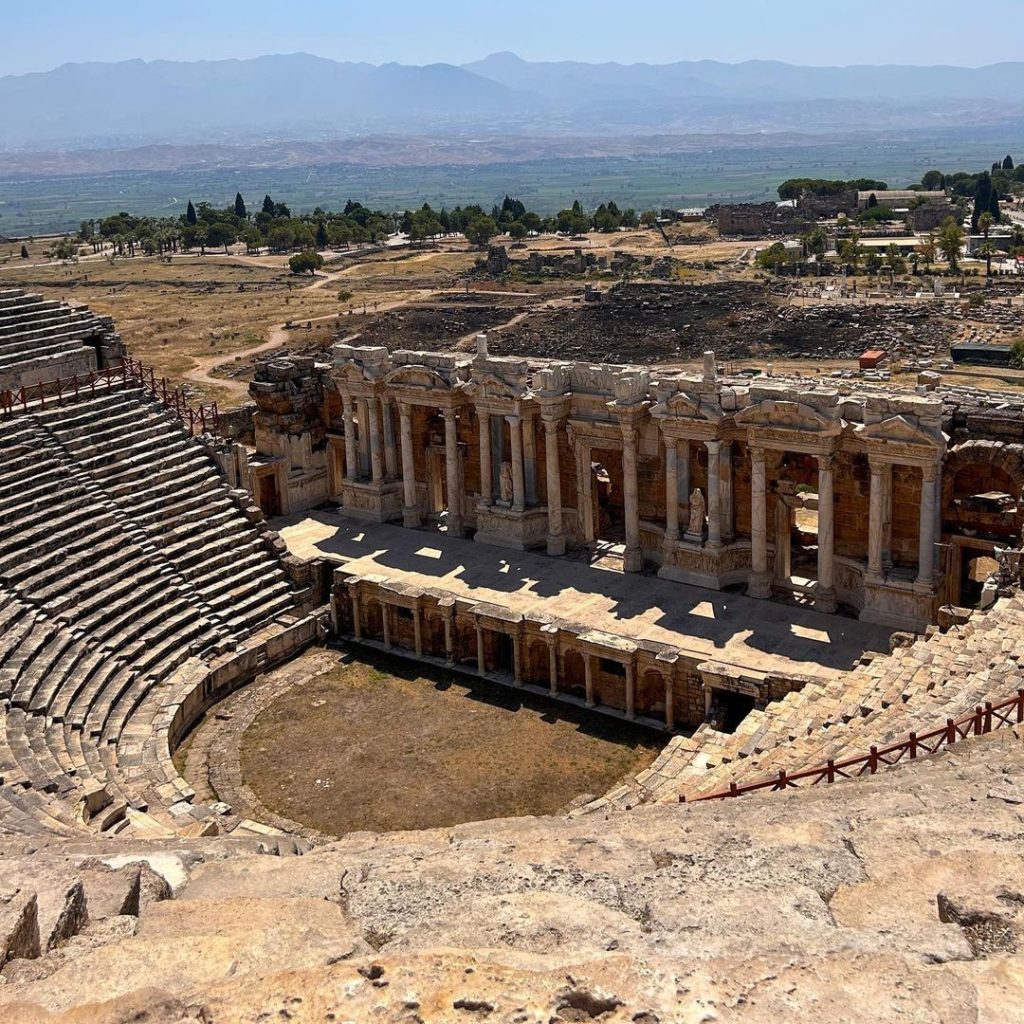
This example closely follows the traditional amphitheater design standard throughout the empire – large, circular, and with raised seating. It would have hosted various performances, from comedies and epic poetry to reenactments of stories. Theaters were also an essential route for those in power to gain favor from the masses.
Stairway of Ziggurat of Ur
This hugely impressive staircase at the great Ziggurat of Ur dates from 4,00 years ago; its oldest parts were constructed out of mud bricks, the traditional building material of the time. When Iraq began to open its doors in 2021, tourism activities also grew.
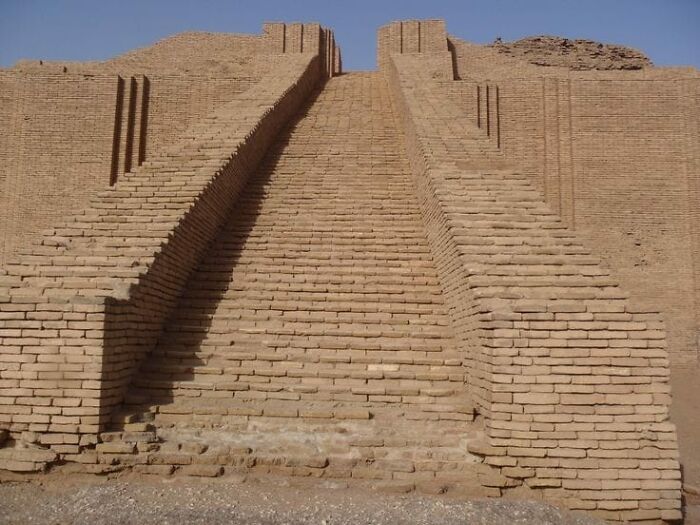
The temple has three massive staircases at the terrace, and another on the second terrace. Typically, each level would be smaller than the one before. Today, less than 30 ziggurats remain; most are located in Mesopotamia or modern-day Iran and Iraq.
Grand staircase at the Palace of Knossos, Crete
Built between 2200 and 1400 BC, the Palace of Knossos is the oldest surviving palatial center in Europe and is famed for its vast and complex layout. The image shown here shows the grand staircase that linked its stories.
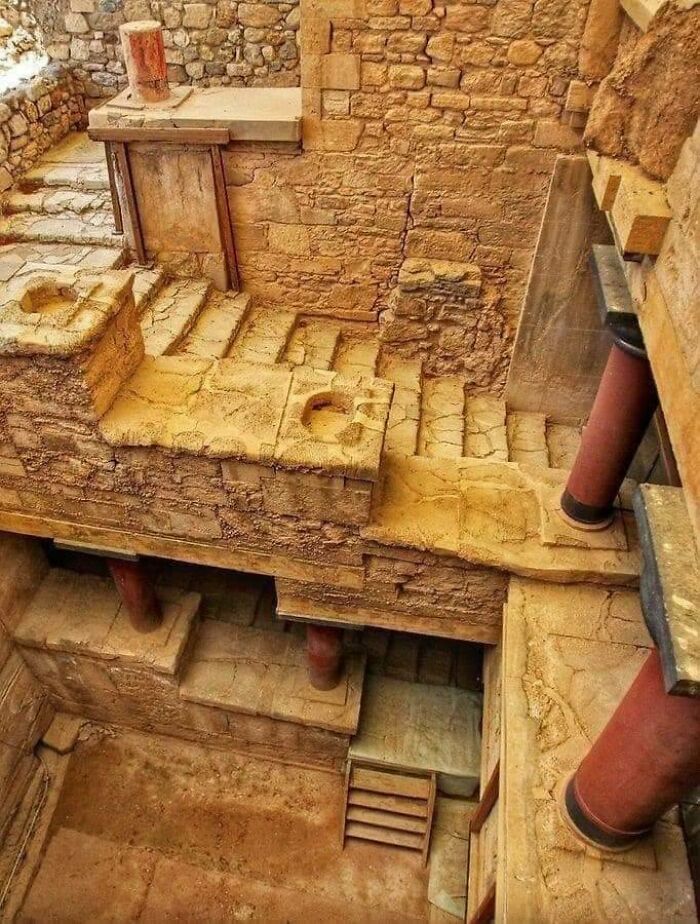
Apart from its architecture, the palace is known for its connection to Greek mythology. The myths of Icarus, Daedalus, and the Minotaur are closely associated with it. Nowadays, thousands of tourist flock to the attraction on the island of Crete.
Collection of ancient Greek coins
Money and coins have been an integral part of civilization since the advent of bartering for goods and services. They are a marker of a thriving community, and countless examples have existed throughout the ages. The oldest coin was created almost 3,000 years ago and is now housed in a British museum.
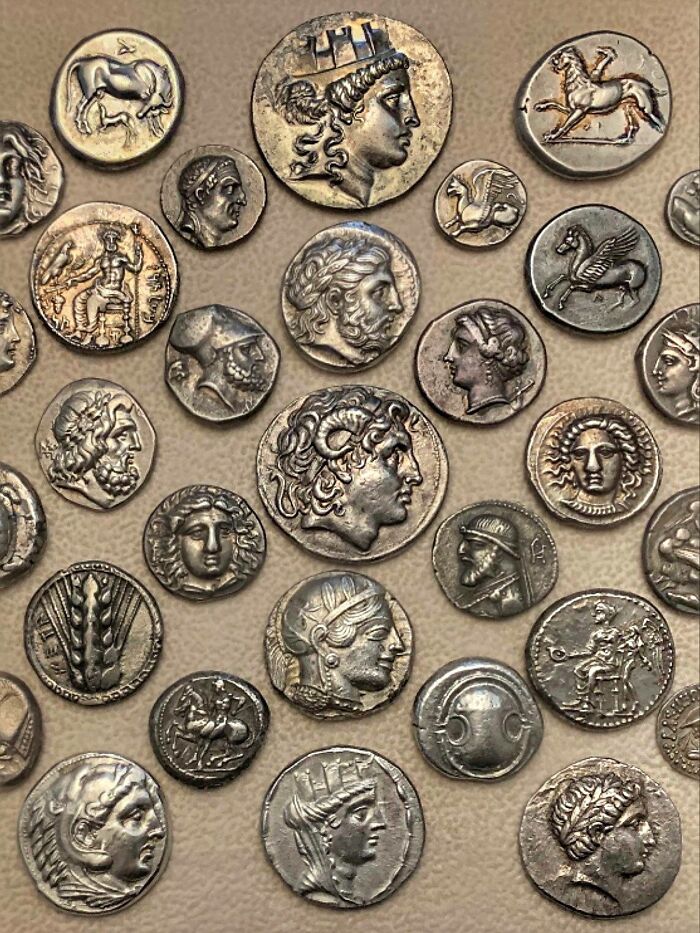
This collection of silver Greek coins with different monetary values is in mint condition. We’re unsure how much they would be worth today, but they are priceless artifacts of a civilization gone by which should be preserved for future generations.
The Gobekli Tepe – Humanity’s First Temple
This monumental structure is the Gobekli Tepe, the first temple ever constructed by humans. It is believed to have been made around 12,000 years ago by tribes of hunter-gatherers. The pillars were carved limestone, showcasing a new level of engineering technology.
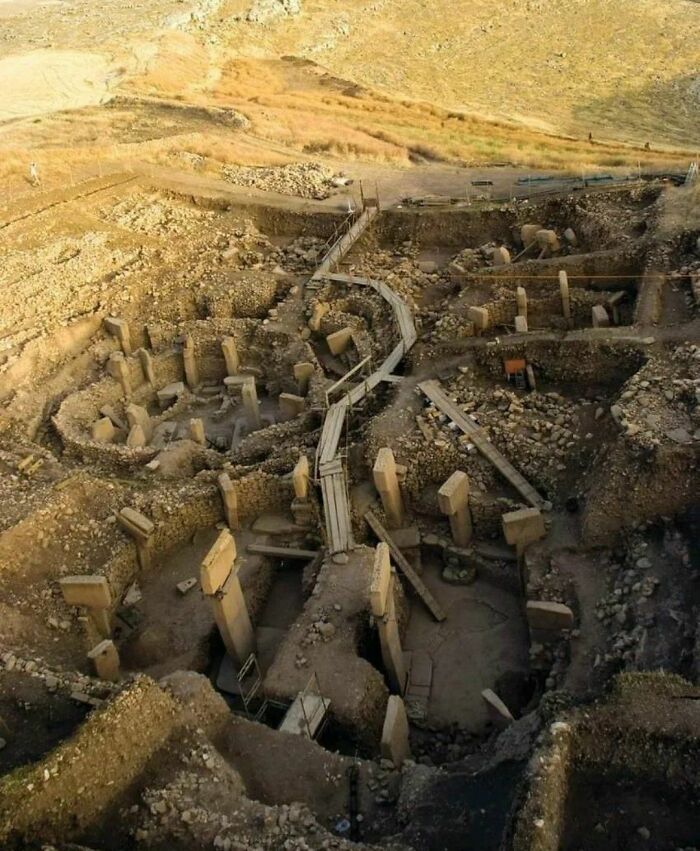
Many of the pillars were decorated with various intricate figures, such as animals and clothes, providing an insight into the civilization and its religion. Widely acknowledged as the oldest temple in the world, Gobekli Tepe is older than England’s Stonehenge by 6,000 years.
Al Naslaa Rock Formation, Saudi Arabia
One of the most puzzling entries on this list is this rock formation. Located in Saudi Arabia’s Tayma Oasis, this strange rock formation was once a single piece of stone split in the middle, each part balanced on pedestals.
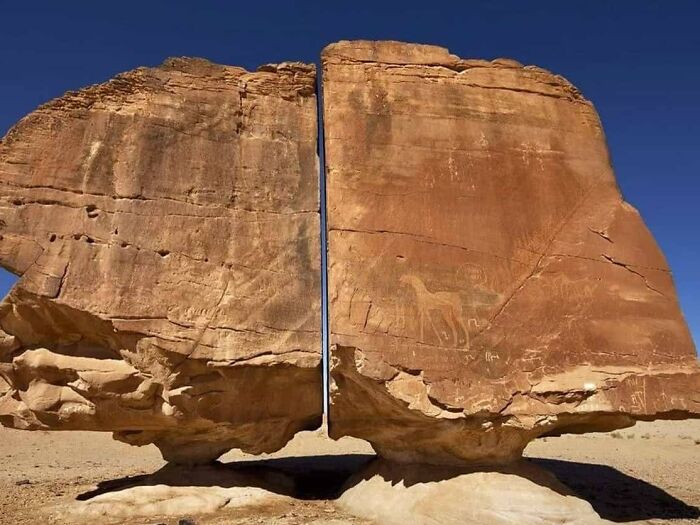
It has fuelled debate and speculation ever since its discovery in 1883 by Charles Huvor. To this day, experts are still determining how this strange, laser-like cut was made. Mysteries like this are fascinating and provide endless speculation and discussion.
Acropolis of Athens
Located high above Athens, this ancient citadel is one of the most recognizable and impressive structures ever built. The Acropolis is the site of several old buildings; the most notable is the Parthenon. Many consider it the most significant architectural achievement of Greek Antiquity.
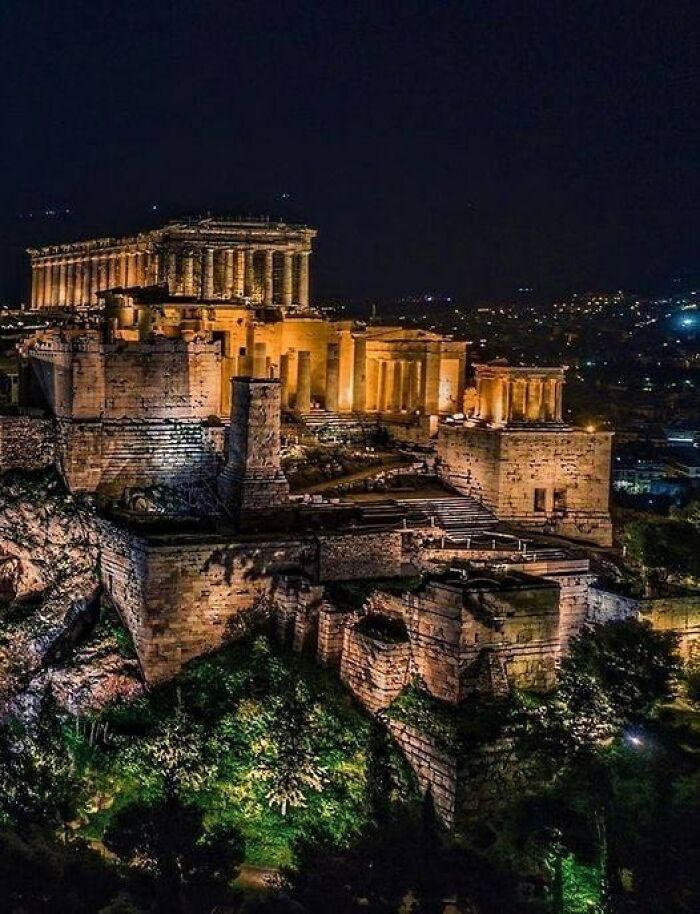
The complex is built on a craggy hill during the latter half of the 5th century BC. Today, an estimated 1 million tourists visit the Acropolis annually. After the Parthenon, the most famous temples in the complex are The Theatre of Dionysus and The Temple of Athena Nike.
Sumela Monastery, Turkey
This Greek Orthodox monastery built high in the Black Mountains of Turkey is awe-inspiring. The site was first used as a monastery in 386 AD and only became disestablished in 1923. It is now one of the region’s most famous sites.
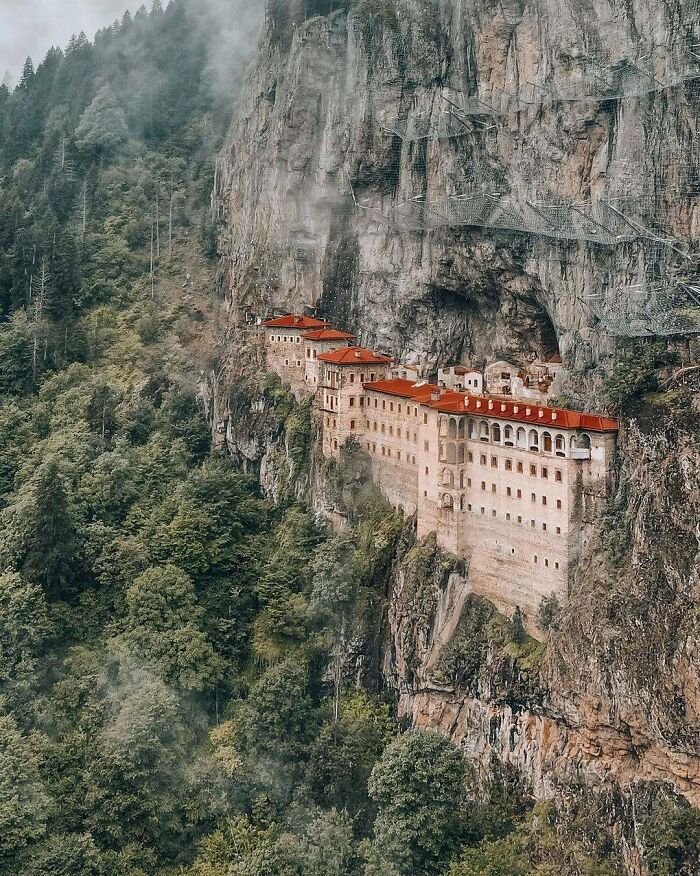
A monk and his nephew constructed the first two rooms of the monastery, and Emperor Justinian ordered its expansion. It was burned and looted in 650 AD and was later restored. Today, it has 72 rooms and a library with a massive collection of books.
The Column of Marcus Aurelius, Rome
Marcus Aurelius was a Roman emperor known for his military strategy and prowess before he became the empire’s ruler. This ancient monument was built in tribute to him and depicts many famous victories. It was inspired by the famous Trajan’s Column and was erected by his son, Commodus.
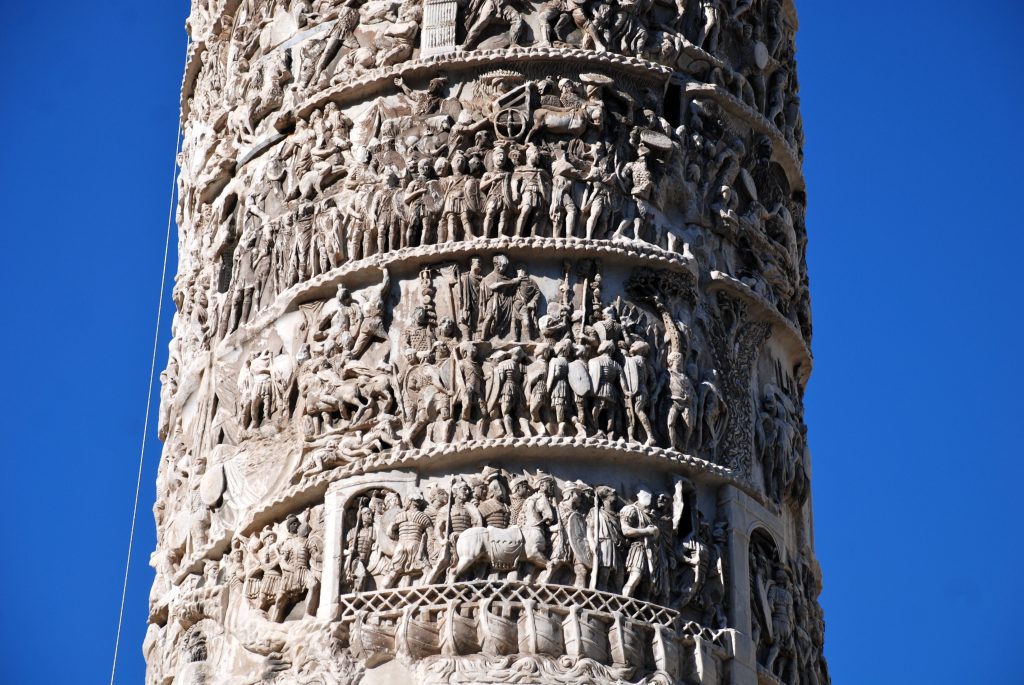
It now stands in the Piazza Colonna in Rome and is famous for its intricate and artistic carvings that show various battles and episodes from the emperor’s life and times. The column’s base is inscribed with the emperor’s honorary titles.
Dracorex Hogwartsia Fossil
This astounding fossil is of an ancient dinosaur that roamed Earth millions of years ago. It looks uncannily like a dragon, and it’s not hard to see why discoveries like this one fuelled belief in the mythical flying and fire-breathing creatures.

It’s not the sort of creature we would like to come across, but it is remarkably well-preserved and gives us a clear picture of what the dinosaur would have looked like when it was still alive. Yes, the dragon was named after the wizard school in the famous books.
The Royal Chateau of Blois, France
Located in the Loire Valley in France, this exquisite Renaissance castle is beautifully constructed and allows visitors to experience what life would have been like over 500 years ago. It is one of the most breathtaking places to visit in France.
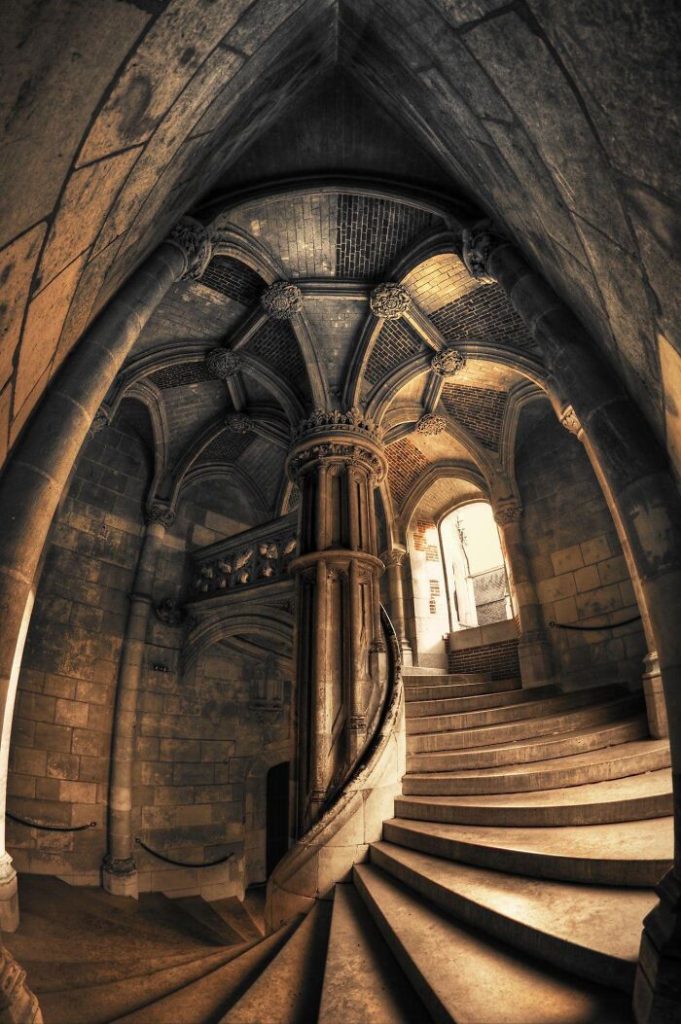
The chateau was once the home of French kings and was visited by Joan of Arc. The incredible stonework and architecture displayed at this castle are astonishing in scope and beauty. Visitors worldwide come to see this magnificent example of stonemasonry.
Petra
The rose city of Petra, famous because of the distinctive pink hue of the rock from which it was carved, is one of the most amazing places on Earth. The Treasury, or Al-Khazneh is its most elaborate temple. It’s so named because of the belief that an Egyptian Pharaoh hid treasure there.
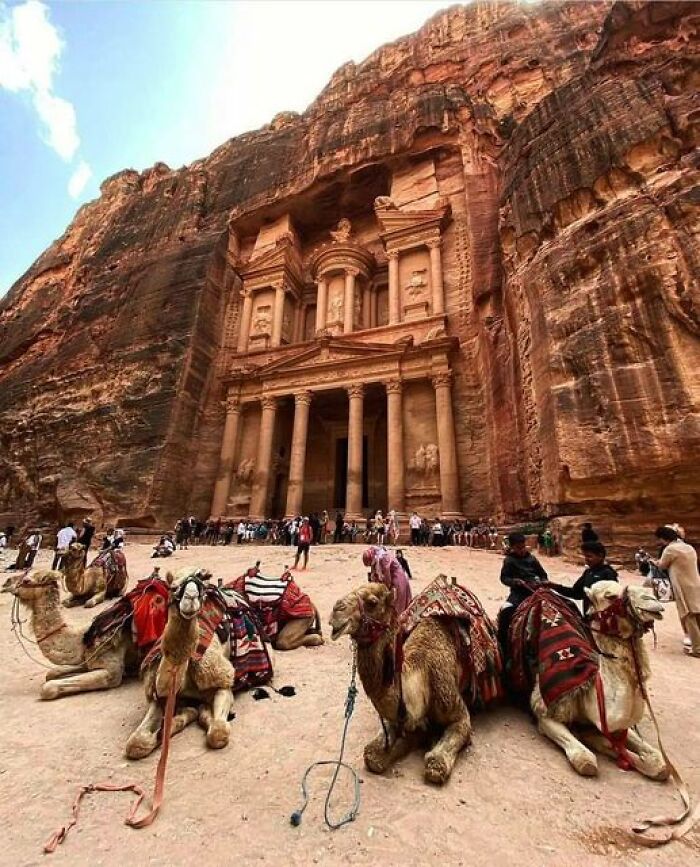
To reach the World Heritage site, you must navigate a vast canyon, but the trek is worth it. When you arrive, you are greeted by a truly unique spectacle. Petra is three hours away from the Jordanian capital of Amman.
Colosseum, Rome
One of the best-known structures in the world, the Colosseum is famed for its grand architecture and its long and bloody history. This ancient Roman stadium was the setting of gladiatorial battles, that sometimes included animals, and entertained the masses.
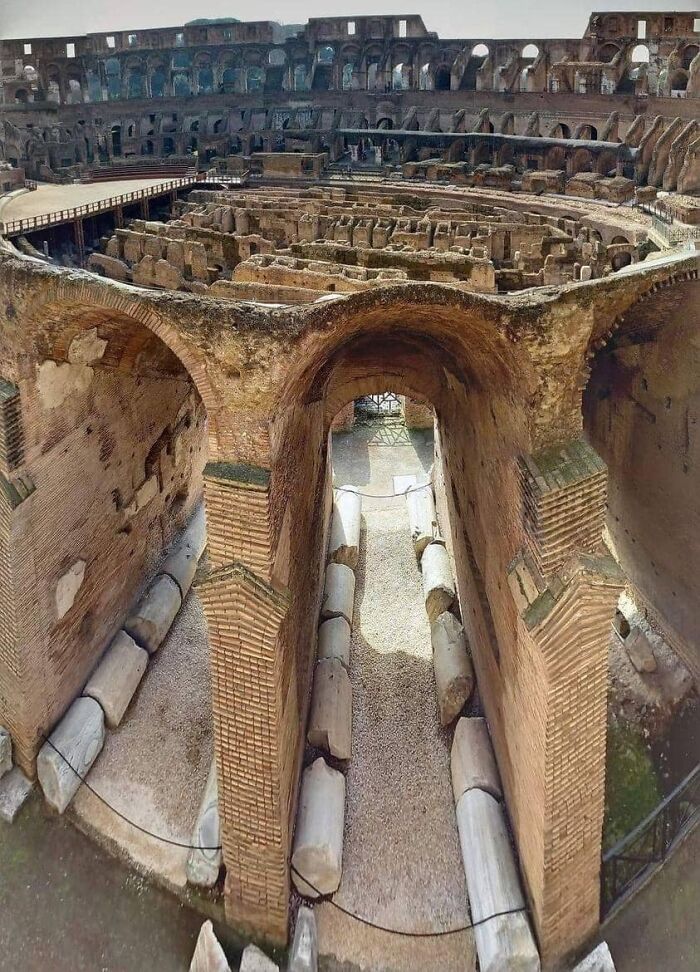
This unusual view of the Colosseum draws attention to the vast basement underneath the arena’s floor. It was a warren of tunnels and holding rooms where the gladiators would wait (along with the lions and tigers) before they fought.
Chand Baori, Rajasthan, India
This incredible stairwell was constructed over a millennium ago, and has to be seen to be believed! It is sixty-four feet deep and goes down thirteen floors. It has an impressive 3,500 narrow steps, all arranged in perfect symmetry.
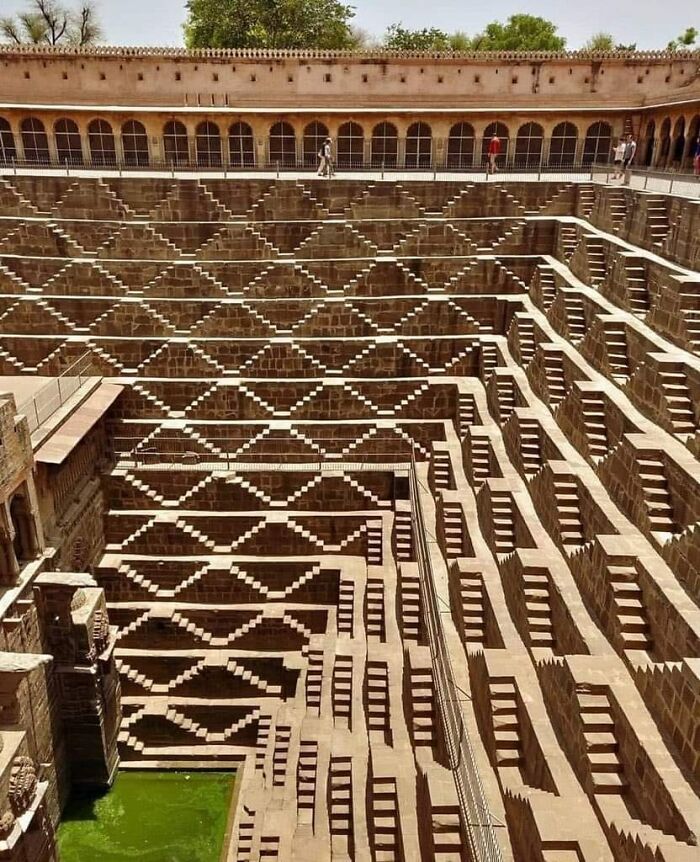
This is one of the most beautiful step-wells in the world; it provides respite from the heat and helps in water conservation. What makes this structure enchanting is the play of light and shadow on the steps. Only highly skilled architects and craftsmen could have built it.
Bazaar of Kashan, Iran
Located in the city center of Kashran, this bazaar is typical of such buildings in the Middle East and is still in use today. It is believed to be constructed during the rule of the Seljuk Empire, and one of its highlights is the grand light well seen in the photo.
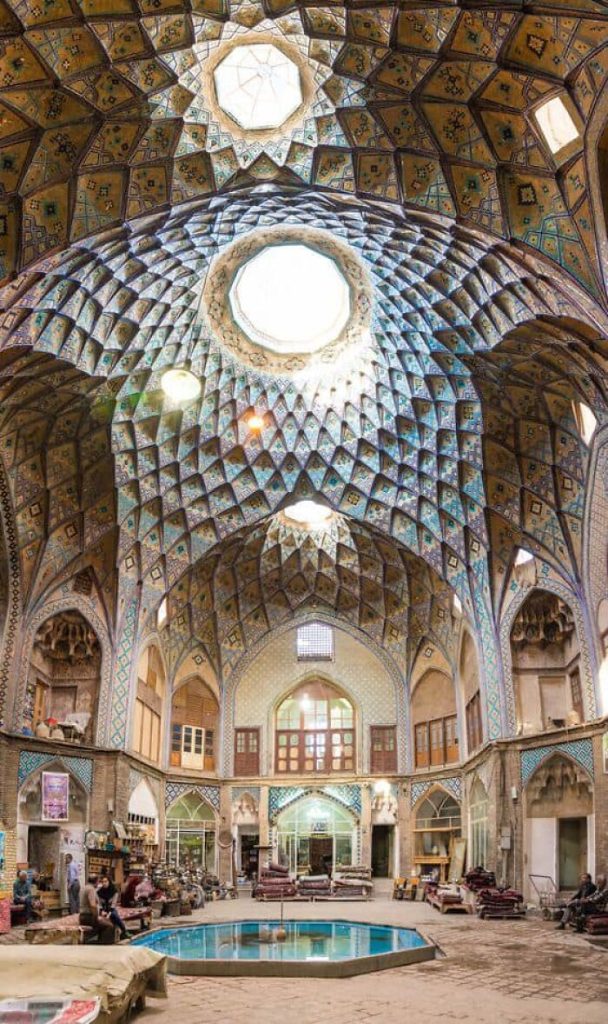
It is several miles long and houses numerous mosques within its compound-like structure. Standing beside the bazaar today are baths, plazas, arcades, and tombs constructed over many different periods. Juxtaposed with ancient brick walls are newly restored parts.
The oldest cat flap, Exeter, England
This fourteenth-century door at Exeter Cathedral is thought to house the world’s oldest surviving catflap. Cats were important in centuries gone by as they helped to curtail any rodent infestation. They were even paid for their work!
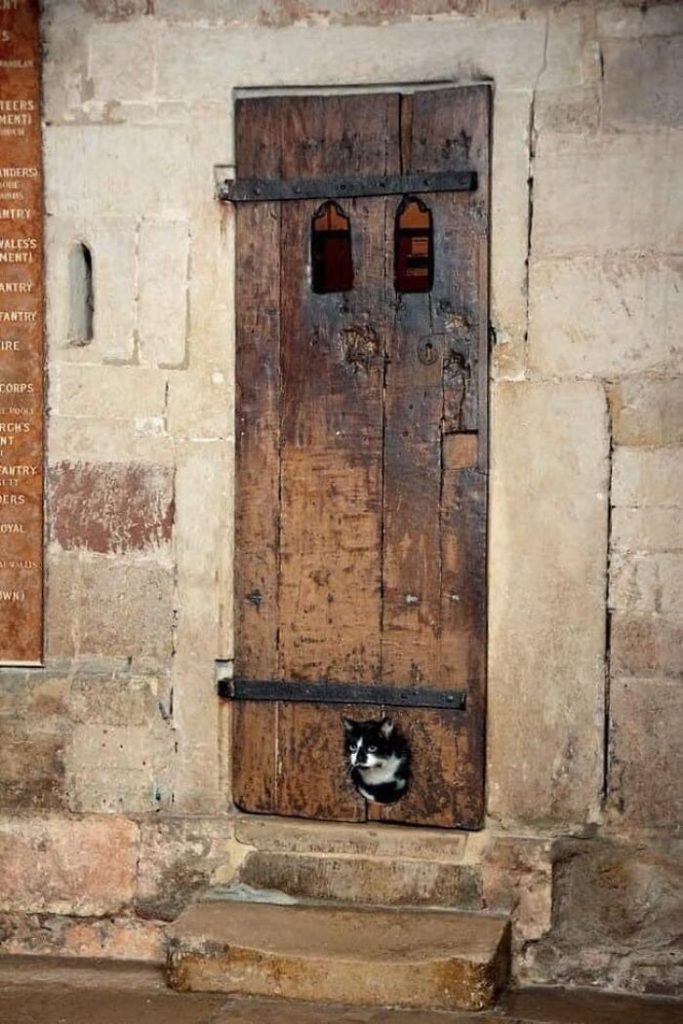
Mice were drawn by the animal fat used to grease the clock’s workings; hence cats were allowed in the cathedral clock to catch them. These days we have other ways of controlling pests, but it is still fascinating to know that felines were as big a part of society back then as they are today.
The Release from Deception – 18th Century sculpture
Genoese artist Francesco Queirolo made this beautiful sculpture in the eighteenth century and remarkably completed it alone. Nobody wanted to help because of how intricate it was to chisel. It is an allegorical and biblical scene depicting a fisherman and an angel.
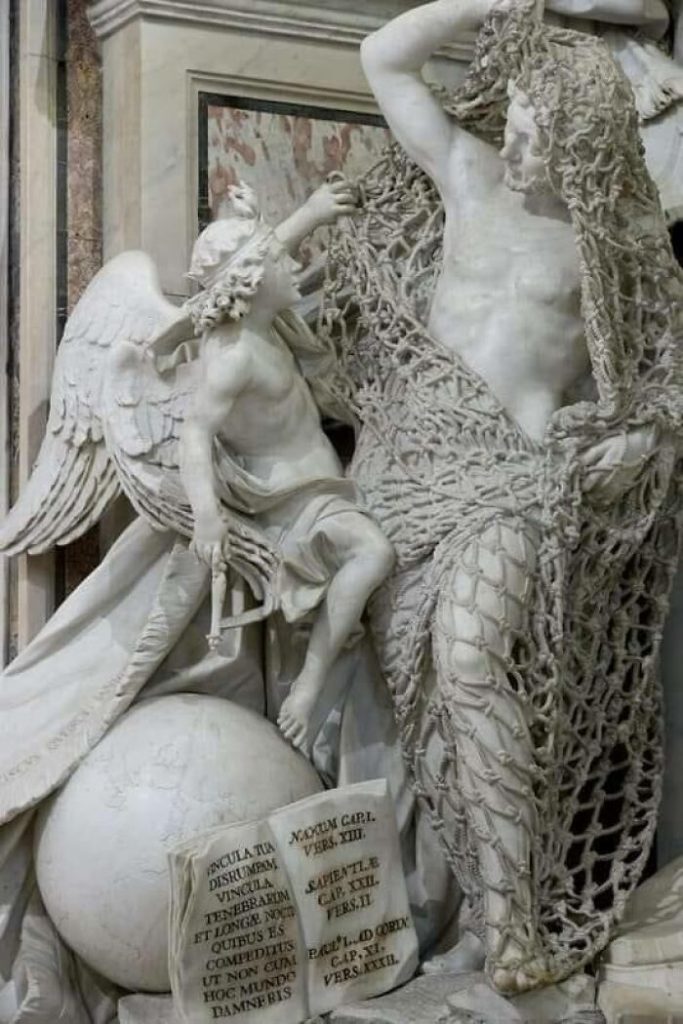
It was made out of one single block of marble, and the fine mesh of the net depicted on the statue must have been painstaking work. It took him seven years to finish and is widely regarded as his piece de resistance.
